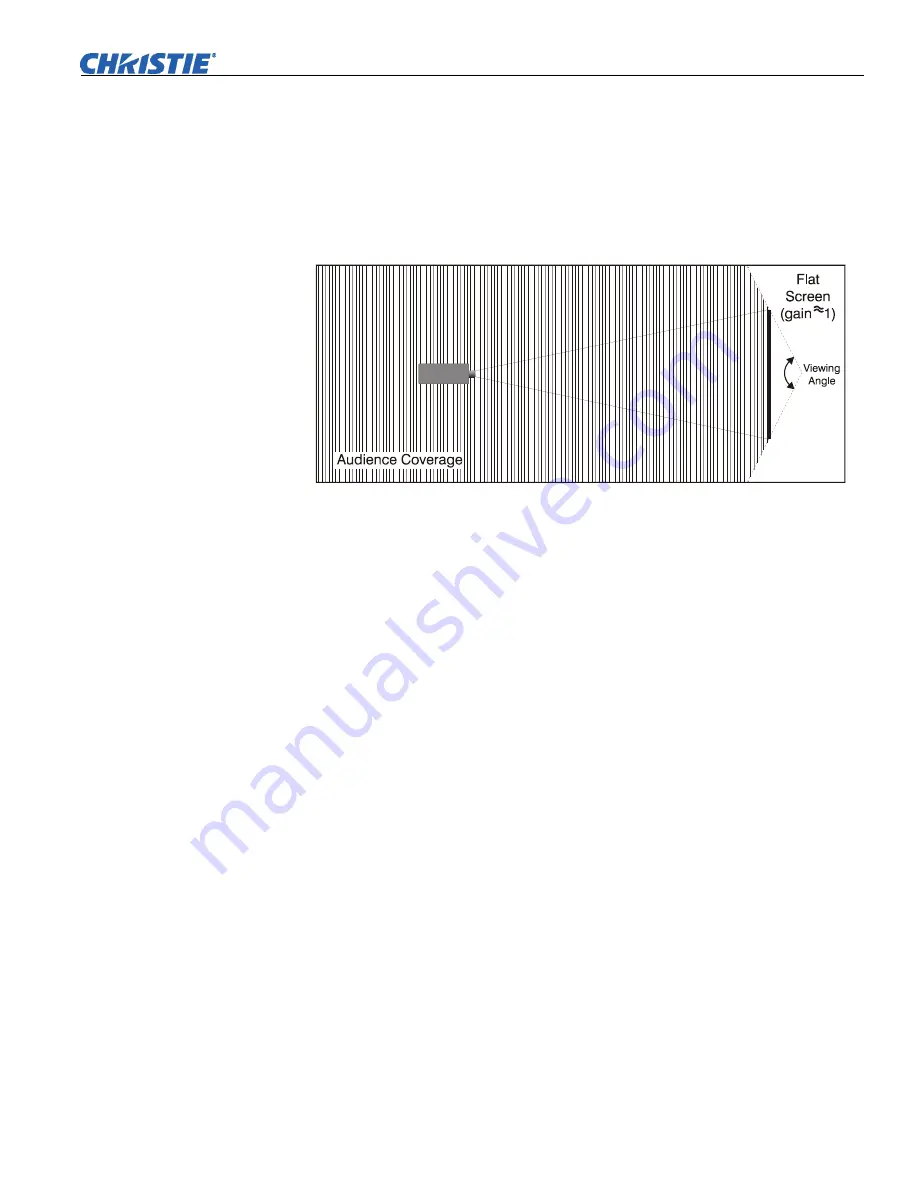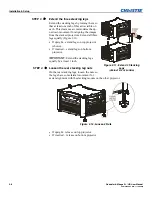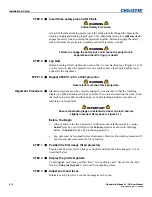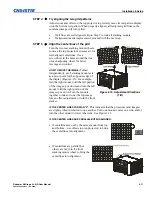
Installation & Setup
Roadster & Mirage S+/HD User Manual
2-13
020-100002-04 Rev. 1 (12-2008)
Front Screen Installations
While there are two basic screen types, flat and curved, generally flat screens are
recommended for this projector (Figure 2.17). Flat screens offer a gain of about one
with a viewing angle just less than 180°. Incident light reflects equally in all
directions so the audience can see the display from various angles. Because of the
low gain, flat screens are most effective when ambient lighting is reduced, although
this difference may be negligible given the high brightness output from this projector.
Figure 2.17. Audience Coverage with Flat Screen
NOTE:
Lenses for this projector are designed primarily for use with flat screens, but
the projector depth-of-field range allows the lens to be focused on curved screens as
well. While focus remains sharp in the corners, there may be significant pincushion
distortion, primarily at the top of the screen.
Rear Screen Installations
There are two basic types of rear screens: diffused and optical. A
diffused
screen has
a surface that spreads the light striking it. Purely diffused screens have a gain of less
than 1. The main advantage of the diffused screen is its wide viewing angle, similar
to that of a flat screen for front screen projection.
Optical
screens take light from the
projector and redirect it to increase the light intensity at the front of the screen. This
increase at the front reduces the intensity in other areas. A viewing cone, similar to
that of a curved front screen installation, is created.
To summarize, optical screens are better suited for brightly lit rooms where the
audience is situated within the viewing cone. Diffused screens may be better suited
when a wide viewing angle is required but there is low ambient room lighting.
Screen size may vary from four feet (122 cm) to 45 feet (1372cm) diagonal,
depending on the lens you are using. For instance, a 0.73:1 lens can produce a five
foot (150 cm) to a 14 foot (548 cm) image size depending on the location of the
projector, whereas a 4.5-7.3:1 zoom lens produces an eight foot (160 cm) to 40 foot
(438 cm) image size. Choose a screen size appropriate for your lens and application.
Keep in mind that if the projector will be used to display text information, the image
size must allow the audience to recognize all text clearly. The eye usually sees a
letter clearly if eye-to-text distance is less than 150 times the height of the letter.
Small text located too far from the eye may be illegible at a distance no matter how
sharply and clearly it is displayed.
Screen
Type
Screen
Size
















































